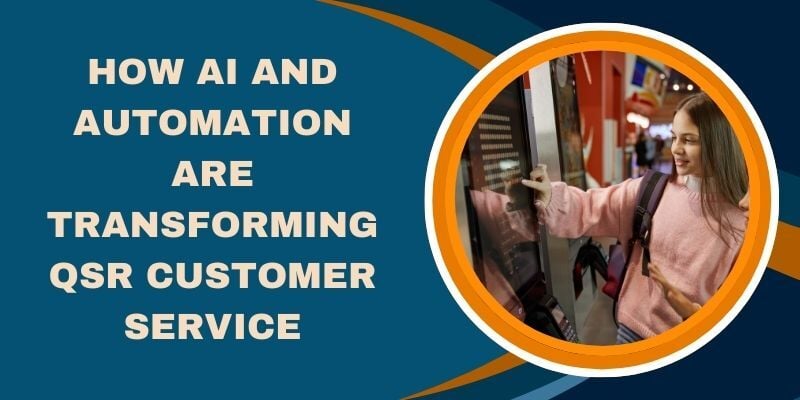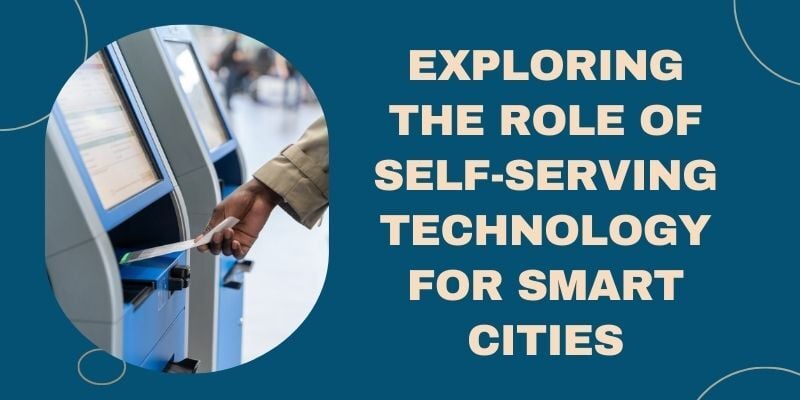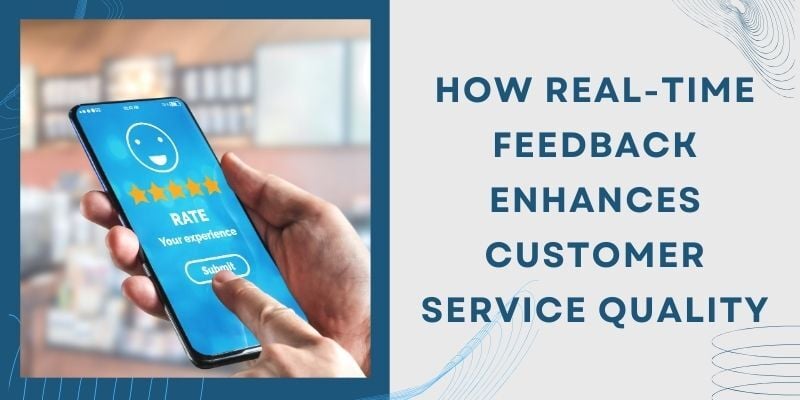Customer experience automation (CXA) refers to using technology to manage and improve customer interactions without human intervention.
By automating repetitive tasks like answering common questions, processing orders, or guiding customers through troubleshooting steps, CXA helps businesses deliver faster and more consistent service.
This automation can occur across various platforms, such as chatbots, automated email responses, and self-service portals, making customer interactions smoother and more efficient.
CXA’s significance lies in its ability to improve efficiency, increase customer satisfaction, and boost productivity.
By automating routine tasks, businesses can reduce response times and provide customers with immediate assistance, leading to happier and more satisfied customers.
Automated customer experience processes also allow employees to focus on more complex tasks, improving overall operational productivity.
This article will explore how CXA transforms industries, its key benefits, and how businesses can implement and optimize customer service automation to enhance their overall customer experience.
Understanding Customer Experience Automation
Customer experience automation (CXA) is designed to streamline and improve business interactions with customers by automating various aspects of the customer journey.
The primary purpose of CXA is to create a uniform, efficient, and personalized customer experience at every touchpoint, from the initial interaction to post-purchase support.
By automating routine tasks and processes, businesses can ensure that customers receive timely and accurate responses, which helps build trust and loyalty.
CXA integrates with customer journey management by mapping out the different stages of a customer’s interaction with a brand and identifying opportunities to implement automation.
This approach improves service consistency and allows businesses to tailor experiences to individual customer needs.
Several technologies play a crucial role in the implementation of CXA:
- Artificial Intelligence (AI): AI powers many aspects of CXA, from chatbots that handle customer queries to advanced data analytics that predict customer needs.
- Chatbots and Virtual Assistants: These tools provide immediate responses to customer inquiries, guiding them through common issues and helping them find information quickly.
- Customer Relationship Management (CRM) Systems: CRM systems store and manage customer data, allowing businesses to automate personalized communication and track customer interactions across channels.
- Data Analytics Tools: These tools analyze customer data to uncover patterns and insights, enabling businesses to predict customer behavior and personalize the customer experience.
Benefits of Customer Experience Automation
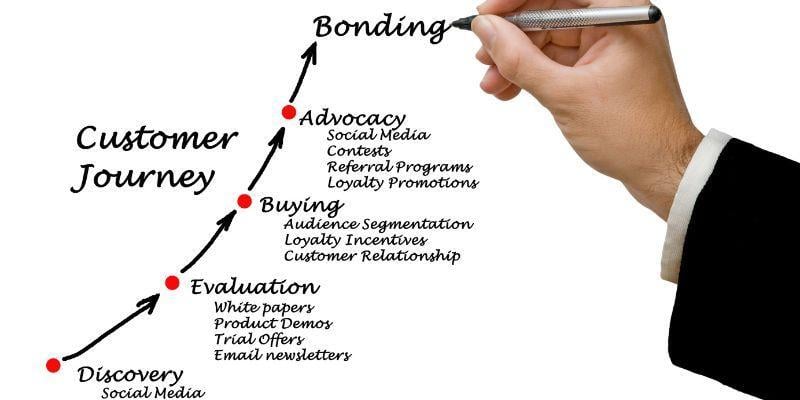
Implementing customer experience automation (CXA) benefits businesses across various industries. By automating routine tasks and optimizing customer interactions, companies can achieve greater efficiency, boost customer satisfaction, and reduce churn rates.
Below, we explore some of CXA’s key benefits and how it can transform customer journeys, satisfaction, and retention.
1. Streamlined Customer Journeys
Automating customer experiences helps design quicker and more efficient customer journeys. By using CX automation tools like AI-powered chatbots and automated email responses, businesses can ensure that customers receive immediate assistance at any stage of their journey.
This reduces wait times and helps guide customers through a smooth and well-structured process, from when they first engage with the brand to completing their purchase or service request.
Self-service tools, such as chatbots and online portals, are critical in augmenting the customer experience by empowering them to find solutions independently.
For example, self-service kiosks allow customers to perform transactions, check information, or solve issues without interacting with a human representative.
This self-sufficiency improves the overall customer experience by providing convenience and speed, critical factors in customer satisfaction.
2. Boosted Customer Satisfaction
Customer automation management directly improves customer satisfaction through timely and personalized interactions. By leveraging AI and data analytics, businesses can anticipate customer needs and tailor their responses to meet them in real-time.
For example, automated systems can analyze past customer interactions and purchase history to offer personalized recommendations or resolve issues before they escalate.
This personalized service meets customer expectations and often exceeds them, leading to a more positive overall experience.
Satisfied customers are more likely to recommend the business to others, becoming advocates for the brand.
Automated customer experience systems ensure that customers consistently receive high-quality service. This develops their loyalty and increases their likelihood of sharing positive experiences with friends, family, and social networks.
This word-of-mouth marketing can significantly boost a company’s reputation and attract new customers.
3. Reduced Customer Churn
One of the most critical benefits of customer service automation is its ability to reduce customer churn by effectively addressing customer needs. When customers encounter issues, automated systems can quickly provide solutions or escalate the problem to a human agent.
This prompt response helps prevent frustration and ensures that customers feel valued and supported throughout their journey with the company.
Automated feedback mechanisms are also essential in identifying and resolving customer pain points. Businesses can detect issues early and take corrective actions by continuously gathering and analyzing customer feedback through surveys, chat interactions, and social media monitoring.
This proactive approach improves the customer experience and strengthens customer loyalty, making it less likely for customers to switch to a competitor.
Managed CX automation can help businesses maintain a low churn rate by keeping customers satisfied and engaged over the long term.
Real-World Examples of Customer Experience Automation

Customer experience automation (CXA) has revolutionized how businesses interact with customers by making processes more efficient and tailored to individual needs.
Across various industries, companies are leveraging automation to improve customer satisfaction, rationalize operations, and improve overall service delivery. Below are some real-world examples that showcase how CX automation is being effectively implemented.
1. Automated Responses
Many businesses use automated customer experience responses to quickly acknowledge customer inquiries and keep them informed throughout their journey.
For example, when a customer sends an email or fills out a contact form, an automated system immediately sends a confirmation message, reassuring them that their request has been received and will be handled promptly.
This is especially common in e-commerce and customer service industries, where immediate acknowledgment can prevent customer frustration and set the right expectations.
A prime example of this is seen in online retail. Companies like Amazon use customer service automation to send instant order confirmations, shipping updates, and delivery notifications.
These automated responses ensure that customers are constantly informed about the status of their orders without needing to reach out for updates. This improves customer satisfaction and frees human agents to handle more complex inquiries.
2. Listening and Feedback Mechanisms
AI-powered tools play a significant role in gathering insights from customer conversations to improve services. Businesses increasingly use data analytics tools to monitor and analyze customer interactions across various channels, including social media, email, and chat.
These tools can identify common pain points, preferences, and trends, enabling businesses to make data-driven decisions to augment their offerings.
For example, companies like Starbucks utilize AI-driven feedback mechanisms to analyze customer feedback from their mobile app and social media channels. By doing so, they can identify popular menu items, track customer sentiment, and quickly address any issues.
This proactive approach improves the customer experience and helps refine products and services to meet customer expectations better.
Another example is Netflix, which analyzes viewer feedback and behavior using AI. This information recommends shows and movies tailored to individual preferences, creating a personalized viewing experience.
This level of customization, powered by CX automation, keeps customers engaged and satisfied, reducing the likelihood of them canceling their subscriptions.
3. Custom Customer Journeys
Personalized customer journeys are another area where automating customer experiences is making a significant impact. By integrating CRM systems and AI, businesses can create highly tailored experiences that guide customers through every stage of their interaction with the brand.
One standout example is Sephora, a global beauty retailer. Sephora uses customer automation management to create personalized online and in-store shopping experiences.
Customers can receive product recommendations based on their previous purchases, search history, and even skin tone through their mobile app.
Sephora’s in-store kiosks also allow customers to scan products and receive prompt information, including reviews, ingredients, and tutorials.
This seamless integration of technology into the customer journey heightens the shopping experience and drives higher sales and customer loyalty.
Another example is Coca-Cola’s use of digital process automation for customer service. The company has implemented automated systems that personalize marketing campaigns based on customer data.
By analyzing purchase history and preferences, Coca-Cola can deliver targeted promotions and offers that resonate with individual customers, ensuring a more engaging and effective marketing strategy.
4. Self-Service and Chatbots
Chatbots have become a cornerstone of CX automation, providing immediate customer assistance and significantly reducing wait times. These AI-powered tools can handle various inquiries, from answering common questions to helping customers troubleshoot issues.
Self-service options, such as chatbots, are particularly beneficial for businesses that need to manage a high volume of customer interactions efficiently.
A great example of chatbot implementation is seen in the airline industry. Airlines like KLM have adopted chatbots to assist customers with booking flights, checking flight statuses, and even answering questions about baggage policies.
These chatbots are integrated into various platforms for customer experience automation, including the airline’s website, mobile app, and even social media channels like Facebook Messenger.
By offering 24/7 support, KLM ensures that customers can get the help they need anytime, leading to a smoother and more satisfying travel experience.
Another example is the banking sector, where companies like Bank of America use chatbots like Erica to help customers manage their finances. Erica can assist with tasks such as checking account balances, paying bills, and offering financial advice based on spending patterns.
This level of automated experience not only augments customer convenience but also positions the bank as a leader in customer-centric innovation.
The Key Components of Customer Experience Automation
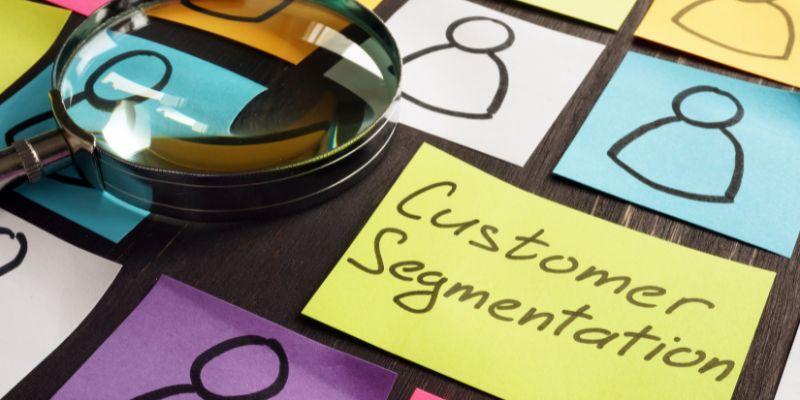
It’s important to explore the key components of customer experience automation (CXA) to fully understand how this powerful approach can transform a business.
These components work together to create a seamless, efficient, and personalized customer experience, ultimately leading to higher satisfaction and loyalty.
Below, we examine the essential elements of CX automation and how they contribute to a successful customer experience strategy.
1. Orchestration
In the context of CXA, orchestration refers to the careful planning and coordination of various customer interactions across multiple channels to ensure a fluid and cohesive journey.
Orchestration is all about designing a customer experience that feels natural and connected, regardless of how or where a customer interacts with a brand.
This involves mapping out every possible touchpoint and ensuring each one is aligned with the customer journey.
For example, orchestration can be implemented through targeted email campaigns based on customer data. Imagine a customer recently browsed a specific product category on an e-commerce site.
An orchestrated email campaign could automatically send a personalized email to that customer featuring products from that category and a special discount.
This approach keeps the customer engaged and increases the likelihood of a purchase, making the customer journey more effective and rewarding.
Orchestration is often supported by quality management systems (QMS), which help businesses monitor and improve their processes to ensure the highest quality of every customer interaction.
By integrating QMS with CX automation, businesses can continuously refine their customer journeys to meet customer expectations better.
2. Segmentation
Segmentation is a critical component of automated customer experience management. It involves dividing a broad customer base into smaller groups, or personas, based on shared characteristics such as demographics, behaviors, or preferences.
This allows businesses to tailor their communication and marketing efforts to each specific group, ensuring that customers receive messages and offers that are relevant to them.
For instance, a retail company might segment its customers into categories like “frequent buyers,” “seasonal shoppers,” and “new customers.” Each group would receive customized marketing content that speaks directly to their interests and needs.
Frequent buyers might get loyalty rewards or early access to new products, while new customers might receive welcome discounts or tutorials on using their purchased products.
Businesses can boost customer engagement strategies by implementing customer automation management techniques like segmentation.
3. Personalization
Personalization is at the heart of CX automation, enabling businesses to deliver tailored experiences at scale.
Automation tools powered by AI and data analytics allow companies to personalize interactions based on customer data, such as purchase history, browsing behavior, and even real-time context.
This means that each customer can receive a unique experience that feels bespoke, even though it is automated.
For example, a streaming service like Netflix uses automation to recommend movies and shows based on what a customer has watched previously.
Similarly, e-commerce platforms like Amazon suggest products that align with a customer’s past purchases or items currently in their shopping cart.
These personalized communications and offers can be automated through various channels, including email, in-app notifications, and SMS.
The ability to personalize interactions at scale is a significant advantage of automated customer experience solutions. It ensures every customer feels recognized and valued, which is key to building long-term loyalty.
4. Automation
Automation is the backbone of customer experience automation and encompasses the various tasks and processes that can be automated to improve efficiency and service delivery.
This includes everything from automated responses to customer inquiries to the deployment of self-service tools like chatbots and online portals.
Businesses can reduce response times, minimize human error, and provide consistent service across all customer interactions by automating routine tasks.
For example, a company might use chatbots to handle common customer queries like order status checks, product availability, or account information updates.
This allows customers to get instant answers without waiting for a human agent. Meanwhile, more complex issues can be escalated to human agents, who are free to focus on high-priority tasks requiring a personal touch.
Automation also plays a critical role in managing customer feedback. Automated surveys and sentiment analysis tools can collect and analyze customer opinions in real-time, allowing businesses to quickly identify and address issues.
This not only improves customer satisfaction but also helps businesses to continuously refine their CX automation platform.
Tools Used for Customer Experience Automation

Customer experience automation (CXA) relies on various tools to align and increase interactions between businesses and customers.
These tools help automate communication, gather valuable feedback, and support customer service teams in delivering a more efficient and personalized experience.
Below are some of the essential tools used in CX automation.
1. Email Automation
Email automation is a crucial tool in automating customer experiences. It enables businesses to send targeted and timely emails to customers based on their actions or preferences.
For illustration, an automated email can be sent after purchase to thank the customer, suggest related products, or provide delivery updates. This boosts communication and ensures that customers receive relevant information that improves their overall experience.
Businesses can maintain consistent and personalized communication at scale by integrating email automation into a customer experience automation platform.
2. Customer Feedback Automation
Automating the feedback collection process is essential for understanding customer needs and improving services. Tools for customer automation management gather feedback through surveys, online reviews, and social media, providing real-time insights into customer satisfaction.
Automated feedback systems help businesses quickly identify areas for improvement and respond to customer concerns promptly, which is crucial for maintaining a positive automated customer experience.
3. Customer Support Automation Tools
Customer service automation tools like chatbots and AI-driven help desks are vital in assisting customer support agents. These tools handle routine inquiries, guide customers through common issues, and escalate complex cases to human agents when necessary.
By leveraging digital process automation for customer service, businesses can improve response times and reduce the workload on support teams, allowing them to focus on more complex customer needs.
Implementing Customer Experience Automation
Implementing customer experience automation (CXA) begins with thoroughly evaluating your current customer experience processes. To start, businesses should:
- Map the customer journey: Identify key touchpoints from initial contact to post-purchase support.
- Analyze interactions: Review customer interactions across platforms, such as websites, emails, and customer service channels.
- Identify repetitive tasks and pain points: Focus on areas with frequent customer inquiries, delays, or inconsistencies.
Businesses can prioritize where automation will have the most significant impact by pinpointing these areas.
For example, if customers frequently ask the same questions, implementing a customer service automation solution like a chatbot can significantly improve response times and overall customer satisfaction.
Once the areas for automating customer experiences are identified, the next step is selecting the right tools and technologies. Here’s how businesses should approach this:
- Define your goals: Determine what you aim to achieve with automation, such as improved communication, higher personalization, or better customer support.
- Select compatible tools: Choose automation tools that integrate smoothly with existing systems like your CRM or e-commerce platform.
- Consider scalability: Go for tools that can grow with your business to ensure long-term viability.
For example, if improving communication is a priority, an email automation tool might be crucial. On the other hand, if developing support efficiency is your goal, consider customer support automation tools like AI-driven help desks or chatbots.
It is also essential to select tools that offer strong analytics and reporting features. These insights are vital for refining your CX automation strategies over time and ensuring they continue to meet evolving customer expectations.
By carefully evaluating current processes and selecting appropriate tools, businesses can implement a customer experience automation platform that addresses immediate needs and supports long-term growth.
Challenges and Considerations
When implementing customer experience automation (CXA), businesses may encounter several challenges:
- Over-reliance on technology: Automating too many aspects of customer service can lead to a lack of human touch, making customers feel undervalued or frustrated, especially when dealing with complex issues.
- Loss of personalization: While automation can rationalize processes, it can also risk creating generic interactions if not carefully managed, leading to a disconnect between the brand and the customer.
- Integration difficulties: Ensuring new CX automation tools work seamlessly with existing systems can be technically challenging, potentially causing disruptions or inefficiencies.
To overcome these challenges, it’s crucial to maintain a balance between automated services and human interactions:
- Blend automation with a personal touch: Ensure that while routine tasks are automated, there are still opportunities for meaningful human interaction, particularly in more complex or sensitive situations.
- Customize automation: Use data and insights to personalize automated communications so they still feel relevant and considerate of the customer’s needs.
- Continuous monitoring and adjustment: Regularly assess the effectiveness of your customer service automation strategy and make adjustments to maintain the right balance.
By addressing these considerations, businesses can implement CXA effectively while ensuring a positive and personalized automated customer experience.
FAQs
What is automation in customer experience?
Automation in customer experience refers to using technology to update and improve customer interactions by automating routine tasks, such as answering inquiries, processing orders, and providing personalized recommendations.
How do we automate customer service?
To automate customer service, businesses can implement tools like chatbots, automated email responses, and self-service portals that handle common customer queries and tasks, freeing human agents to focus on more complex issues.
What is a CX automation platform?
A CX automation platform is a software solution that integrates various automation tools and technologies to manage and optimize customer interactions across different touchpoints, enhancing efficiency and personalization.
What are CX methodologies?
CX methodologies are strategies and practices used to design, measure, and improve customer experiences. They often focus on customer journey mapping, feedback analysis, and continuous improvement through automation and personalization.
What is an automated CX assurance platform?
An automated CX assurance platform monitors and evaluates customer interactions in real time, ensuring that customer service quality and consistency meet predefined standards.
Conclusion
Customer experience automation (CXA) offers significant benefits, including improved efficiency, personalized interactions, and increased customer satisfaction.
Key components such as orchestration, segmentation, personalization, and automation create a smooth and engaging customer journey.
By automating routine tasks, businesses can ensure that customers receive timely and relevant responses while freeing human agents to handle more complex issues.
Businesses should consider implementing CXA tools to increase customer interactions, modernize operations, and stay competitive in today’s fast-paced market.
By integrating the right technologies and balancing automated services and human touch, companies can build stronger customer relationships and achieve long-term success.
BOOK A FREE DEMO
